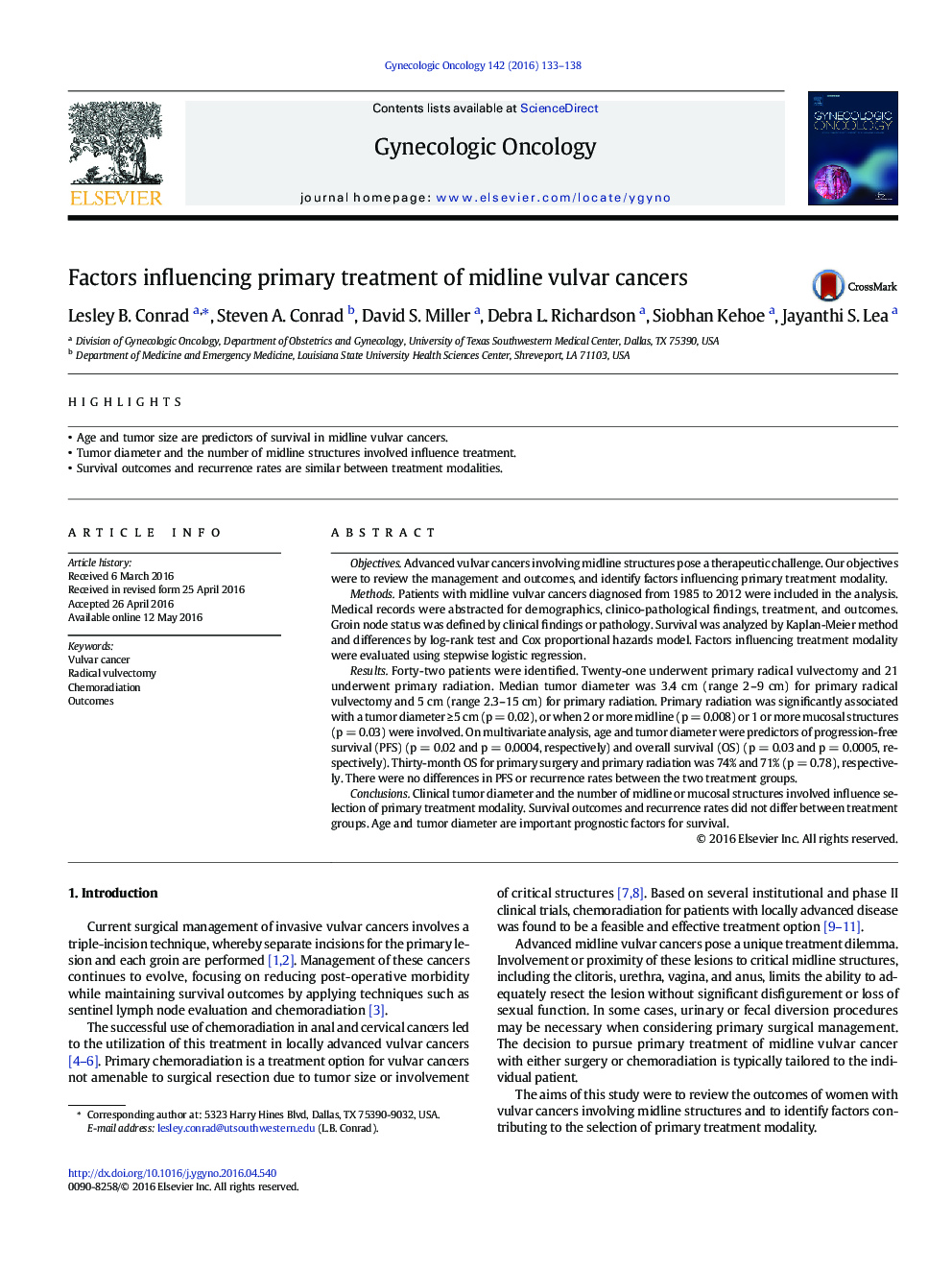| Article ID | Journal | Published Year | Pages | File Type |
|---|---|---|---|---|
| 3945400 | Gynecologic Oncology | 2016 | 6 Pages |
•Age and tumor size are predictors of survival in midline vulvar cancers.•Tumor diameter and the number of midline structures involved influence treatment.•Survival outcomes and recurrence rates are similar between treatment modalities.
ObjectivesAdvanced vulvar cancers involving midline structures pose a therapeutic challenge. Our objectives were to review the management and outcomes, and identify factors influencing primary treatment modality.MethodsPatients with midline vulvar cancers diagnosed from 1985 to 2012 were included in the analysis. Medical records were abstracted for demographics, clinico-pathological findings, treatment, and outcomes. Groin node status was defined by clinical findings or pathology. Survival was analyzed by Kaplan-Meier method and differences by log-rank test and Cox proportional hazards model. Factors influencing treatment modality were evaluated using stepwise logistic regression.ResultsForty-two patients were identified. Twenty-one underwent primary radical vulvectomy and 21 underwent primary radiation. Median tumor diameter was 3.4 cm (range 2–9 cm) for primary radical vulvectomy and 5 cm (range 2.3–15 cm) for primary radiation. Primary radiation was significantly associated with a tumor diameter ≥ 5 cm (p = 0.02), or when 2 or more midline (p = 0.008) or 1 or more mucosal structures (p = 0.03) were involved. On multivariate analysis, age and tumor diameter were predictors of progression-free survival (PFS) (p = 0.02 and p = 0.0004, respectively) and overall survival (OS) (p = 0.03 and p = 0.0005, respectively). Thirty-month OS for primary surgery and primary radiation was 74% and 71% (p = 0.78), respectively. There were no differences in PFS or recurrence rates between the two treatment groups.ConclusionsClinical tumor diameter and the number of midline or mucosal structures involved influence selection of primary treatment modality. Survival outcomes and recurrence rates did not differ between treatment groups. Age and tumor diameter are important prognostic factors for survival.
